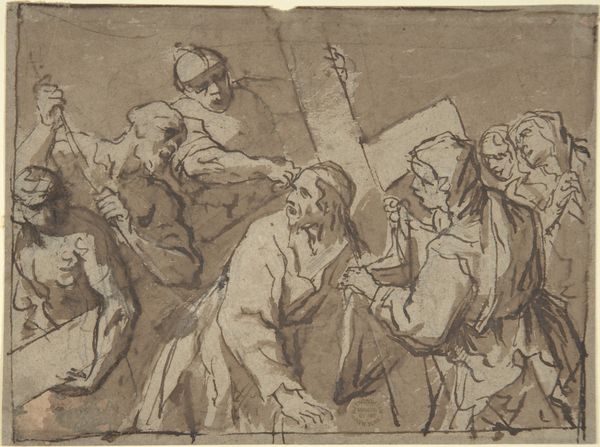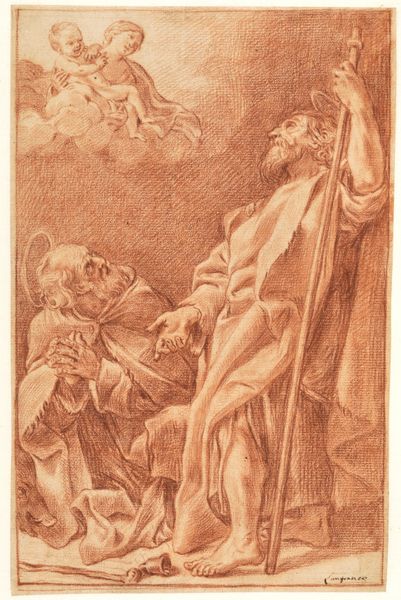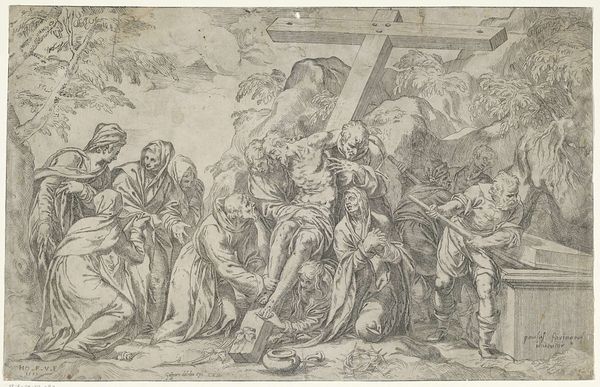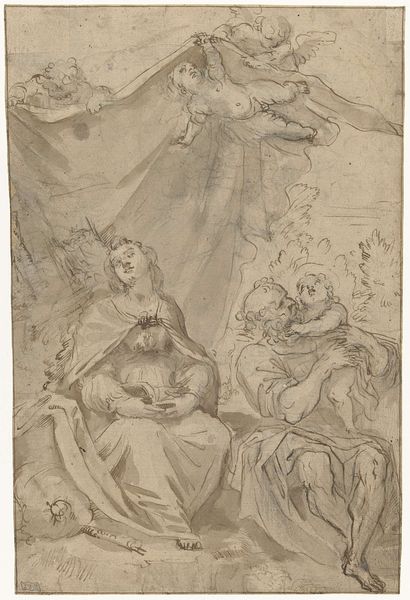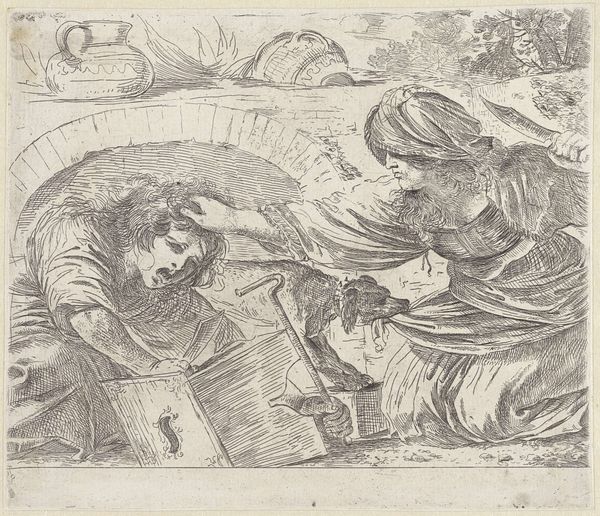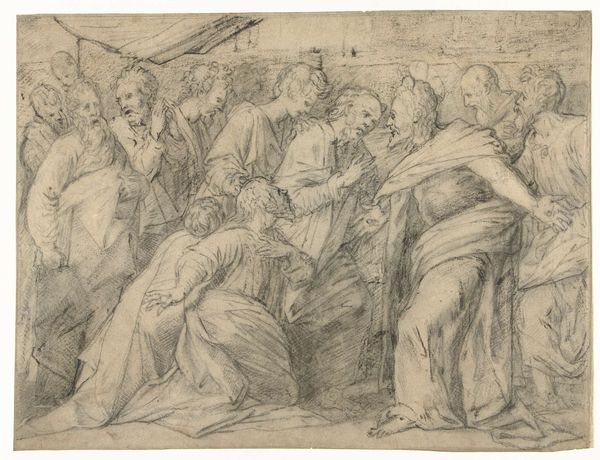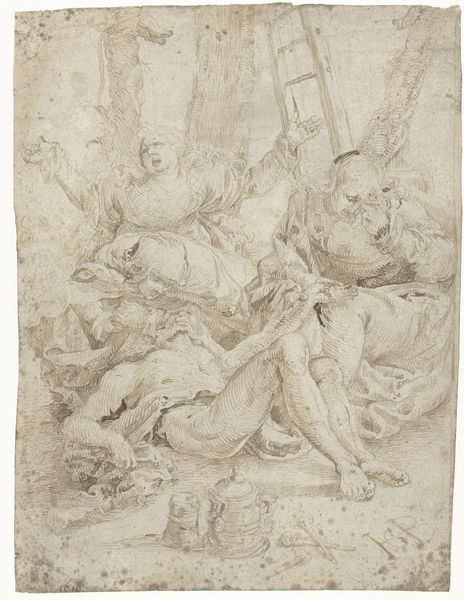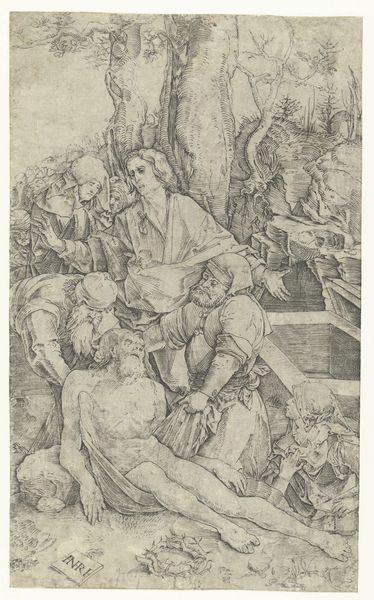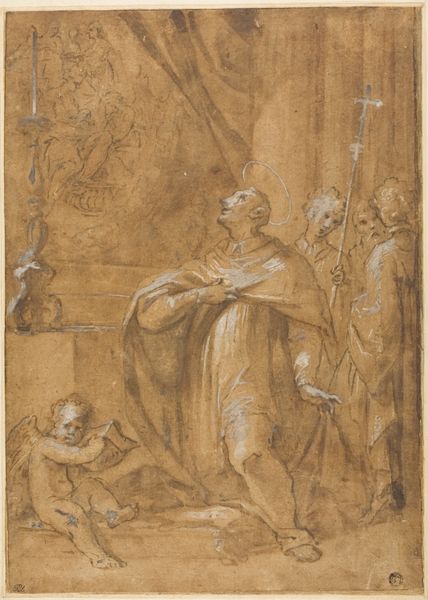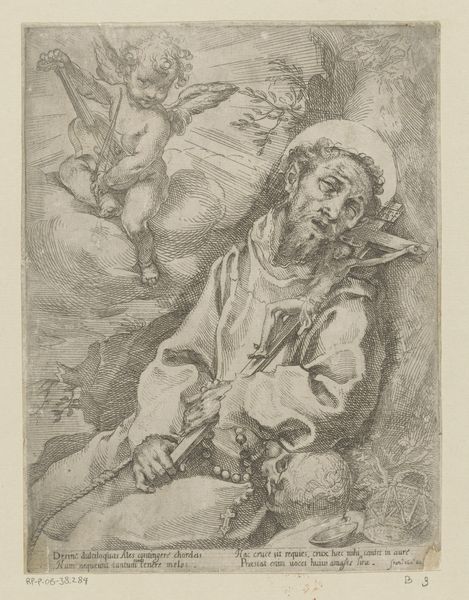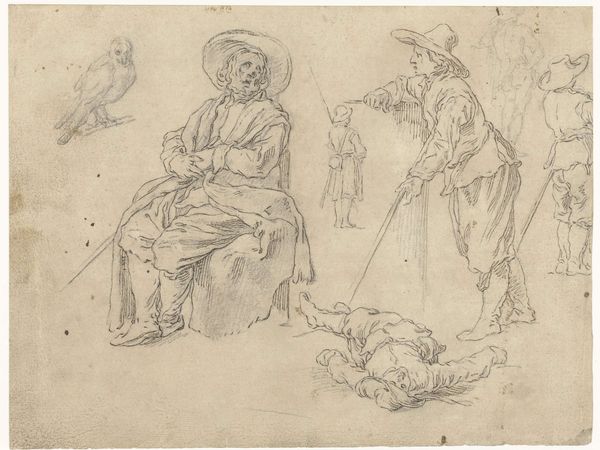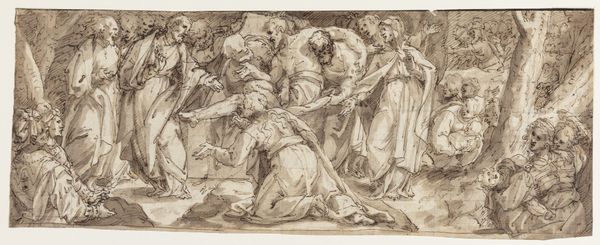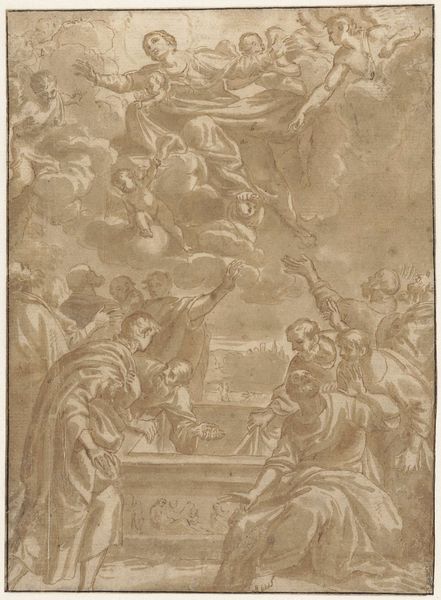
drawing, ink, pencil, pen
#
drawing
#
toned paper
#
light pencil work
#
baroque
#
pencil sketch
#
figuration
#
personal sketchbook
#
ink
#
ink drawing experimentation
#
pen-ink sketch
#
pencil
#
sketchbook drawing
#
pen
#
pencil work
#
history-painting
#
storyboard and sketchbook work
#
sketchbook art
Dimensions: height 229 mm, width 358 mm
Copyright: Rijks Museum: Open Domain
Curator: Ah, I’m drawn in. This drawing, dating roughly from 1587 to 1660, captures a raw emotion. The title translates to "Christ on the road to Calvary, speaking to the women,” by Giacomo Cavedone. What do you see when you first look at this piece? Editor: The material simplicity hits me first – the toned paper, the stark lines of ink and pencil. It’s so immediate and unprocessed. This is more than just a rendering of a biblical scene; it's the residue of labor, you know? Curator: I know exactly what you mean. I feel the weight of the cross just by looking at the lines pressing down upon his form and, in contrast, those tiny cherubic heads that appear almost out of place, as if hovering, detached from reality, which feels true somehow. Do you see it as devotional? Editor: Not entirely, or not primarily. Yes, it uses religious imagery, but I'm focused on Cavedone's labor. The choice of cheap material points me to a different narrative: the accessibility of art-making in a specific socioeconomic framework. How do ordinary materials reflect powerful religious narratives? Curator: So, it's less about piety and more about practicality for you. But maybe they coexist. He uses common materials to express an almost tangible sense of grief, turning these simple materials into vessels of profound sorrow and a visual language understandable to many. Editor: Exactly! Consider the intended audience. Art wasn't just for palaces, it was for people, churches, everywhere. How did makers adapt to these conditions? What were the conditions that make for certain narratives around grief? We're not just seeing faith; we're witnessing an accessible material faith manifest itself. Curator: True! The way the lines scratch, the vulnerability of the material… Cavedone is speaking a universal language that connects us not just to a biblical story but to human emotion etched with such raw honesty on simple paper. Editor: Right, but even honesty and emotional response here are conditioned! Materials tell stories, whether Cavedone intended that narrative or not. That's the interesting tension here. Curator: Indeed. Next time I encounter a sketch, I won't forget to feel both the sorrow and the artist's very hand at work shaping this experience. Editor: Likewise! Let's never let "inspiration" or "devotion" eclipse the concrete realities of labor and materials. That is what this piece, no matter how fraught its narrative, ultimately does so well.
Comments
No comments
Be the first to comment and join the conversation on the ultimate creative platform.
